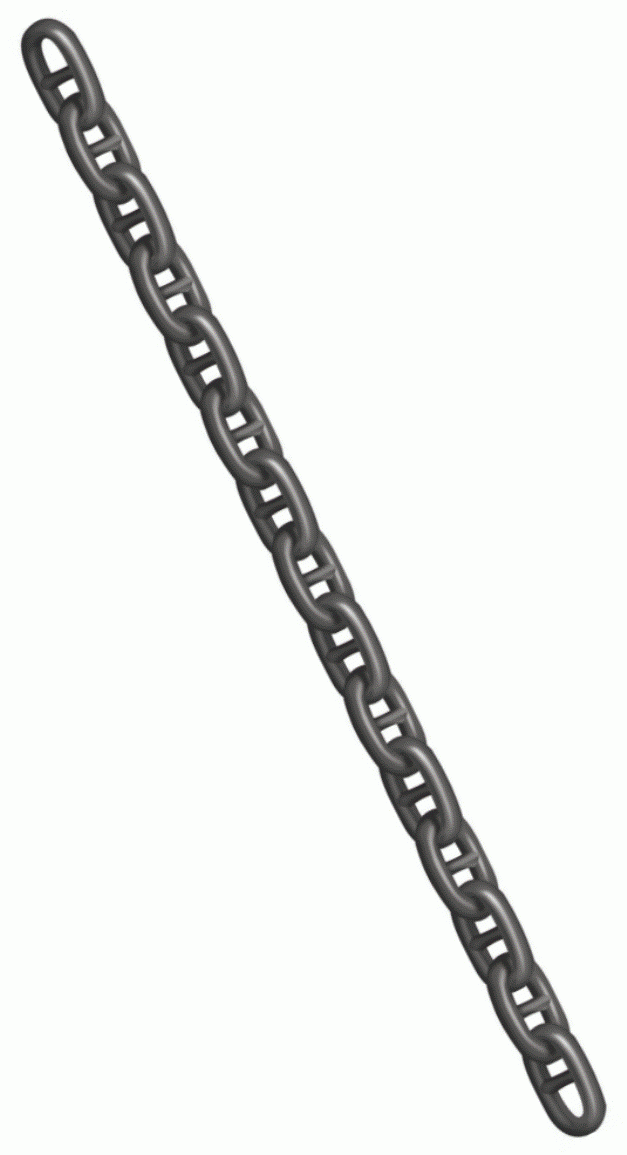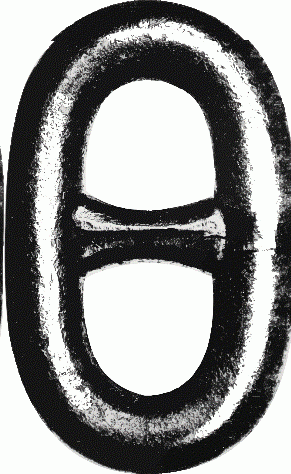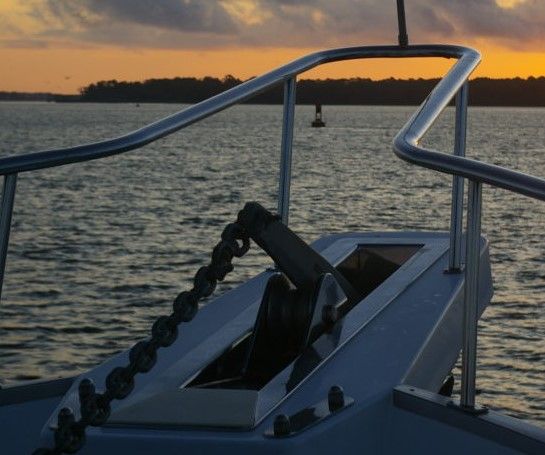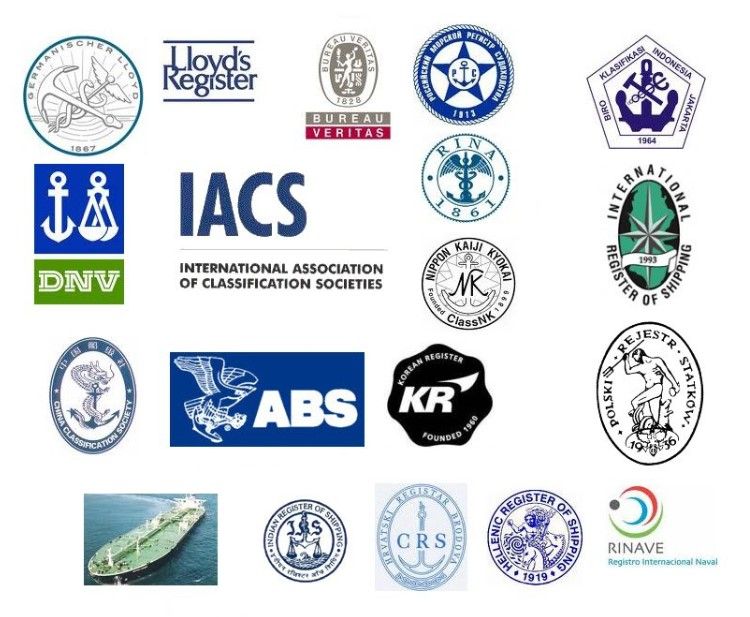1410, PARKSON, 44-60 ZHONGSHAN ROAD, QINGDAO, CHINA
General information: 
• OPEN LINK (STUDLESS LINK)
• WELDLESS CHAIN
• PROOF COIL CHAIN
• HIGH TEST
• LASHING
• COAST GUARD BUOY CHAIN
• STAINLESS STEEL
• ALLOY
• DOCK FENDER CHAIN
• STUD LINK
• U.S. NAVY
• CAST STEEL
• GRADES 2, 3, 4 AND 5

Stud link chain is strong chain and has a stud across its middle which gives the extra rigidity.
Stud link chain is normally used as anchor cable chain. It is sometimes used as a mooring chain.
CHAIN LENGTHS REQUIRED
In determining amount of anchor chain to be used for a particular anchorage it is usual to allow 5 to 7 times the depth of water; dependent on such factors as nature of bottom, present and anticipated weather, tidal and current conditions, state of readiness of the ship’s powerplant, draft, amount of exposed hull and superstructure, and length of stay at anchor.
CHAIN AND LINK MAINTENANCE
Anchor chain cable should be ranged at regular intervals and examined for damage and signs of excessive wear. It is considered good practice to occasionally shift the shots about in the chain to insure even wear. The chains may also be sprayed with a preservative such as fish oil at this time.
Representative terms of mechanical properties
RATED LOAD VALUE
The maximum recommended load that should be exerted on the item. The following terms are also used for the term Rated Load: “SWL”, “Safe Working Load”, “Working Load”, “Working Load Limit”, and the “Resultant Safe Working Load.” All rated load values, unless noted otherwise, are for in-line pull with respect to the centerline of the item.
PROOF LOAD
The average load to which an item may be subjected before visual deformation occurs or a load that is applied in the performance of a proof test.
PROOF TEST
A term designating a tensile test applied to the item for the sole purpose of detecting injurious defects in the material or manufacture.
ULTIMATE LOAD
The average load at which the item being tested fails or no longer supports the load.
SAFETY FACTOR
An industry term denoting theoretical reserve capability. Usually computed by dividing the catalog stated ultimate load by the catalog stated working load limit and generally expressed a ratio, for example 5 to 1.

ANCHOR CHAIN CERTIFICATION- CLASSIFICATION CERTIFICATES
Classification societies are private enterprises whose main aims are to gather information and specifications about the construction, maintenance and condition of a ship, which can be of interest to charterers, insurance companies, the maritime inspectorate and a possible buyer.
Where the Administration of a State is mainly concerned with the safety of life at sea, the classification society is mainly concerned with the commercial value of the ship.
We could also say that if a ship is safe before she leaves the harbour, that is
well constructed and maintained satisfies all rules concerning stability and watertight compartments;
has a reliable engine;
has enough fire protection, detection and extinction devices;
has enough life-saving appliances on board;
has the necessary radio communications apparatus on board;
takes the necessary precautions regarding dangerous goods;
etc.;
On the other hand, if a ship is built with the best materials and engineering skills, well maintained, etc. and all these information are regularly entered in registers published by the Classification Society, then we can assume that such a ship deserves a greater confidence by a person concerned about the commercial value of the ship such as an eventual buyer, charterer or insurer.
As we mentioned already before, in certain States, Classification Societies may also be responsible for the tasks of the Administration. But, in any case the Administration remains responsible.
All information regarding a classed ship can be found in the Register Book or the Supplement to the Register Book.
The task of a Classification Society is not only to implement rules according to which ships must be constructed and which can be found in Rules and Regulations for the Construction of Steel Ships, but also to follow the construction of the ship in order to give it a certain class. After the construction the ship is closely followed by means of periodical inspections (annual surveys, intermediate surveys, docking surveys, special surveys at five yearly intervals, complete surveys of machinery at five yearly intervals) or continuous surveys (in that case the Classification Society regularly inspects part of the ship in order not to keep the ship too long in port).
The most important Classification Societies are:
Lloyd's Register of Shipping (LR) established in London in 1760;
Bureau Veritas (BV) established in Antwerp in 1828 and since 1929 in Paris;
Germanisher Lloyd (GL) established in HAMBURG IN 1867.
American Bureau of Shipping(AB) established in New York in 1862;
Norske Veritas(NV) established in Oslo in 1864;
Registro Italiano Navale(RI) established in Rome in 1861;
Nippon Kayi Kyokai(NK) established in Tokyo in 1988.
For other Classification Societies, see Classification Societies
The class of a ship is usually indicated be means of symbols. All Classification Societies use different symbols.

To get more information about anchor chains, pls click:
https://www.huahanmachinery.com/product/anchor-chain.html